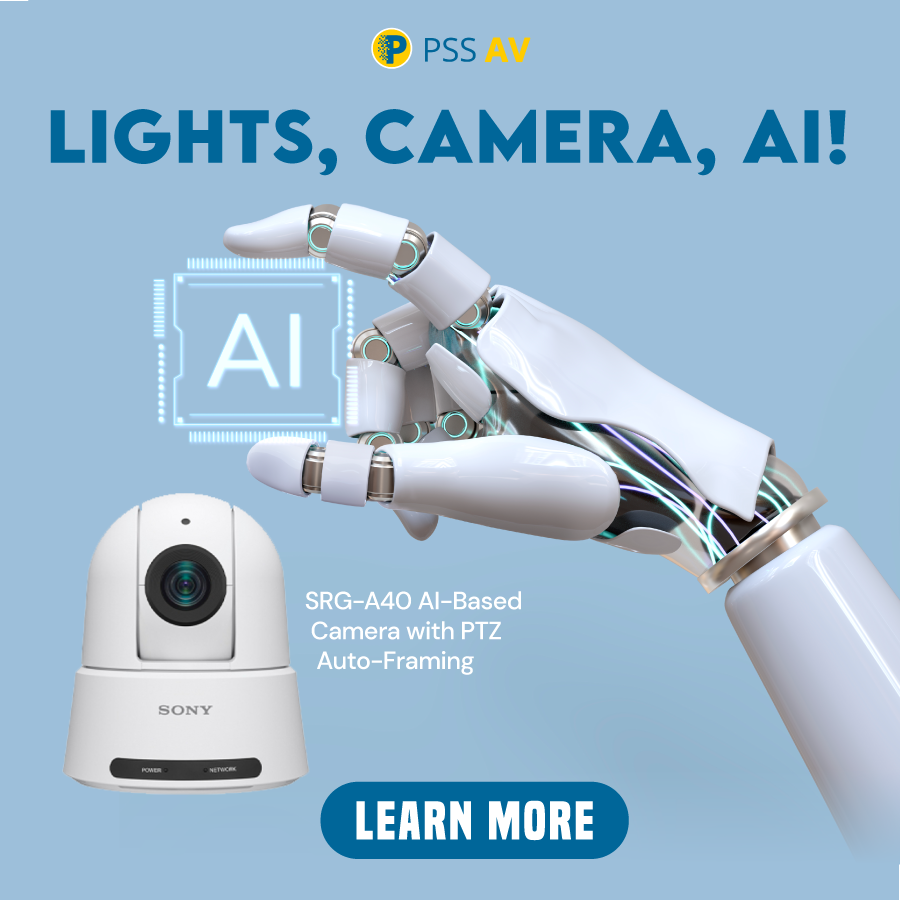[vc_row][vc_column][vc_column_text text_larger=”no”]The VPL-PHZ10 LaserLite produces super-sharp Wide-UXGA resolution that handles HD programming extremely well, at an affordable list price of just $3,200.
While Sony may have lost its lead in computers and tablets, the company remains at the forefront of professional projector technology and its $3,200 LaserLite VPL-PHZ10 is a breakthrough device that combines a laser light source with an ingenious self-cleaning filter. In fact, it’s as close to a maintenance-free projector as we’ve see and is a winner for medium-sized places of worship.
At 19 pounds and 5.0- by 20.0- by 13.8-inches, the VPL PHZ10 is a lightweight compared to the 60-pound Canon LX-MU800Z. It’s easy for two people to install it in a nook, shelf or with ceiling mounting hardware. It has two height-adjustable legs upfront and six attachment points underneath arranged in groups of three for mounting with the lens or the projector’s body centered.
Sony sells a $179 compact ceiling mount, although generic hardware worked just as well.Happily, the $3,200 VPL-PHZ10 produces super-sharp Wide-UXGA resolution that handles HD programming extremely well. Sony also makes a VPL-PWZ10 that puts out Wide-XGA images and cuts the upfront costs by $800. Both are rated at a 500,000:1 contrast ratio and should be more than enough to light up a mid-sized temple, church or mosque.
[/vc_column_text][vc_row_inner][vc_column_inner width=”1/2″][vc_column_text text_larger=”no”]
What’s inside (and out)?
Inside, they both have Sony’s latest Z-Phosphor laser light source, which starts with a powerful solid-state blue diode laser that’s converted to white light with a rotating phosphor disc. This beam is split into its red, blue and green components with a series of mirrors and aimed at individual 0.76-inch LCD panels for the primary colors. The final image is sent to the screen via the projector’s output lens.
[/vc_column_text][/vc_column_inner][vc_column_inner width=”1/2″][vc_single_image image=”35406″ img_size=”full” alignment=”center” parallax_scroll=”no”][/vc_column_inner][/vc_row_inner][vc_column_text text_larger=”no”]The laser light engine allows the projector to be set at any angle, so it’s just as good for special effects, like aiming a welcome message on the entrance’s floor or ceiling, as it is for filling a screen with the day’s text or video of the choir. The big payoff though, is that instead of having to change the projector’s lamp every 2,000 or 3,000 hours of use, the VPL-PHZ10 is rated to deliver 5,000 lumens for 20,000 hours. That’s the equivalent of more than 25 years of the projector being used for 15 hours a week.
If you use the projector’s Constant Brightness setting, the VPL-PHZ10’s sensor continually monitors and adjusts its output to keep the illumination steady. This, however, reduces its output to 4,500-lumens and a lifetime of 14,000 hours. Still, that’s nearly 18 years of use. The VPL-PHZ10 follows this up with something competitors lack: an automatic filter cleaning mechanism that shakes the filter element every 100 hours to remove accumulated dust and dirt. Rated by Sony to last the same 20,000-hours as the light source, you can set and forget the VLP-PHZ10. The VPL-PHZ10’s lens is protected by a clear-glass shield, has a throw ratio of between 1.28:1 and 1.88:1, and maxes out with a 25-foot image. It can project a 16.7-foot image from between 18.2- and 26.8-feet, depending on how the zoom is set. The good news is that the entire VPL-PHZ10 projector costs $3,200, about what a mid-priced lens goes for.[/vc_column_text][vc_row_inner][vc_column_inner width=”1/2″][vc_single_image image=”35405″ img_size=”full” alignment=”center” parallax_scroll=”no”][/vc_column_inner][vc_column_inner width=”1/2″][vc_column_text text_larger=”no”]The VPL-PHZ10 has all the needed ports for connecting to today’s AV gear. In addition to audio and USB ports, the system has a plug panel with connections for two HDMI lines as well as a composite video jack and a VGA connector. At any time, you can display networked HDBaseT video over the institution’s wired network; there’s an $89 WiFi option that uses its USB port.[/vc_column_text][/vc_column_inner][/vc_row_inner][vc_column_text text_larger=”no”]The projector’s set up was quick and easy, thanks to its three test patterns that help get the image just right. It has an Auto Pixel Alignment key for when using a VGA input. It’s a snap to navigate through the VPL-PHZ10’s practical menu. Its categories range from Function (including volume control) and Connection/Power (networking and display settings) to Operation (with Constant Brightness and Eco settings) and Installation (for tweaking the projector’s settings and remote-control settings). There’s also a useful Information section that includes seeing how many hours the projector has been used for. If the projector is networked, all the Menu selections are available to a connected computer by typing the projector’s IP address (listed in the Connection/Power section) into a Web browser.
It also works with Crestron RoomView control software.The VPL-VHZ10 is a quick starter with a full image on-screen in 15.6 seconds, just a second off the Canon LX-MU800Z’s time. It took just 2.9 seconds to shut itself down. Overall, the VPL-PHZ10 worked well with a Lenovo PC, DVD player, live video feed and a Gefen 8-way HD switcher. In its highest brightness Dynamic mode, the VPL-PHZ10’s output had a greenish-blue cast to it that makes people look a bit ghoulish but is just fine for text or graphics. The Standard and Presentation modes are much better at showing realistic flesh tones, particularly if you set the color temperature to the Low (warm) setting.
Overall Assessment
All in all, the VPL-PZ10 has the power and price tag to put up a bright and sharp image while reducing a house of worship’s projection expenses dramatically.
Source: churchproductions.com
Image Source: pixabay.com
[/vc_column_text][/vc_column][/vc_row]









